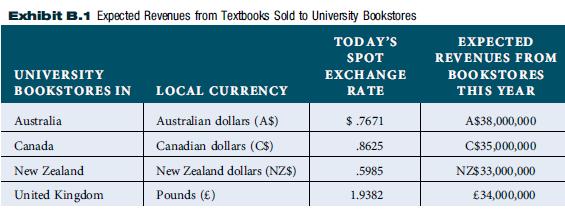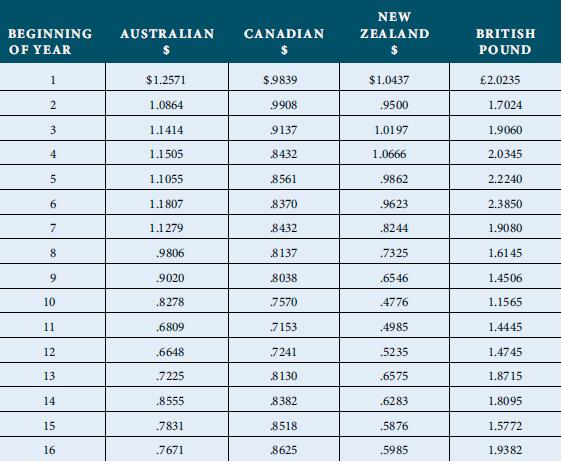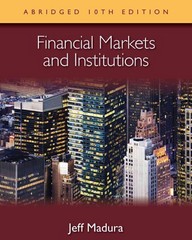Whaler Publishing Company specializes in producing textbooks in the United States and marketing these books in foreign
Question:
Whaler Publishing Company specializes in producing textbooks in the United States and marketing these books in foreign universities where the English language is used.
Its sales are invoiced in the currency of the country where the textbooks are sold.
The expected revenues from textbooks sold to university bookstores are shown in Exhibit B.1.
Whaler is comfortable with the estimated foreign currency revenues in each country.
However, it is very uncertain about the U.S. dollar revenues to be received from each country. At this time (which is the beginning of Year 16), Whaler is using today’s spot rate as its best guess of the exchange rate at which the revenues from each country will be converted into U.S. dollars at the end of this year (which implies a zero percentage change in the value of each currency). Yet, it recognizes the potential error associated with this type of forecast. Therefore, it desires to incorporate the risk surrounding each currency forecast by creating confidence intervals for each currency. First, it must derive the annual percentage change in the exchange rate over each of the last 15 years for each currency to derive a standard deviation in the percentage change of each foreign currency.
By assuming that the percentage changes in exchange rates are normally distributed, it plans to develop two ranges of forecasts for the annual percentage change in each currency: (1) one standard deviation in each direction from its best guess to develop a 68 percent confidence interval, and (2) two standard deviations in each direction from its best guess to develop a 95 percent confidence interval. These confidence intervals can then be applied to today’s spot rates to develop confidence intervals for the future spot rate 1 year from today.

The exchange rates at the beginning of each of the last 16 years for each currency (with respect to the U.S. dollar) are shown here:

The confidence intervals for each currency can be applied to the expected book revenues to derive confidence intervals in U.S. dollars to be received from each country. Complete this assignment for Whaler Publishing Company, and also rank the currencies in terms of uncertainty (degree of volatility). Since the exchange rate data provided are real, the analysis will indicate (1) how volatile currencies can be, (2) how much more volatile some currencies are than others, and (3) how estimated revenues can be subject to a high degree of uncertainty as a result of uncertain exchange rates. (If you use a spreadsheet to do this case, you may want to retain it since the case in the following chapter is an extension of this case.)
Step by Step Answer:






